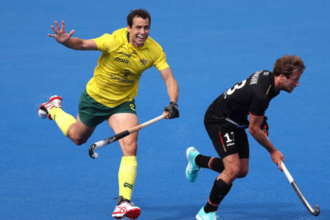Australia will introduce a historic social media ban on all users aged below 16, and the policy will be introduced in December of this year. The program is intended to minimize the health and safety risks that children are exposed to online. This step is seen by observers throughout the globe as possibly establishing a global precedent in future online safety laws.
Social media companies such as Facebook, Instagram, YouTube, and Snapchat are required under the new rule to do what is reasonable to stop people under 16 years old from creating or maintaining an account. Not complying might lead to fines of up to A$50 million.
Although the policy has been well-received by most parents and guardians, scholars in privacy and digital ethics have been very concerned. They warn that age restriction enforcement can be achieved at the expense of compromising the personal information of users, depending on the implementation of verification systems.
What Technologies Could Enforce the Ban?
Australia has contracted a UK company to study ways of implementing the social media ban in an effective manner. The report that was created thus discussed numerous possibilities, such as facial recognition, ID verification, behavioral tracking, and parental consent.
All approaches were considered to be technically feasible. However, none turned out to be reliable in all applications. The most accurate was identity document verification, which was associated with risks, primarily, the possibility of long-term storage of data and its unauthorized disclosure to regulators.
Though promising, facial analysis technology proved to be less effective among the age group that is near the 16-year threshold. It tended to classify the users two to three years off and gave the wrong approvals or rejections. On the same note, parental approval systems were also found wanting in authenticity and accuracy.
Are Privacy and Data Risks a Concern?
Yes. Among the most important conclusions of the report was that there is no risk-free method. There have been a number of high-profile data breaches in Australia in the last few years, most of which have involved sensitive personal information. Identity verification or biometric data in children already creates a high degree of exposure without effective data protection being established.
Platforms can either have the incentive to retain longer than necessary information or can be forced to provide it to the authorities. These would make them more vulnerable, in particular, minors.
The report suggests such an approach in order to deal with this. Platforms can improve countermeasures against circumvention strategies such as VPNs and forged documents by integrating a variety of strategies, such as checking documents, face detection, and tracking behavior. Read another article on X Platform Cyberattack Outages
What Does the Government Say?
Communications Minister Anika Wells admitted that there is no universal answer. Nevertheless, she pointed out that enforcement of social media bans can be achieved through the application of existing technologies in an efficient and privacy-respecting manner.
She cited the fact that large technology companies already collect significant amounts of user data to sell commercial products. So it is only logical that they should use the same instruments to make children secure online.
Minister Wells also gave a dramatic call to action, saying that companies ought to have age-assurance systems in place by December 10, when the law becomes effective.
Are There Unintended Consequences to the Ban?
The ban is well-intentioned, but not everyone is sure that it will have the desired effect. Advocates in mental health have cautioned that reducing access may push the youth into isolation, particularly when they are accustomed to using social platforms to get support and associate with others.
Some others also say that children can resort to non-regulated or underground sections of the Internet, which can be even worse. These critics do not only dwell on the issue of access, but also suggest investing in the areas of monitoring harmful content and educating children on the risks of using the internet.
Polling among Australians indicates that most of them are in favor of the ban. The question is how to strike a balance between protection and freedom, enforcement and privacy.
Final Thoughts
This is a bold measure of restrictions on the use of social media by children below 16 years in Australia. Although enforcement tools are available, they are associated with trade-offs in accuracy and privacy. The government has gone further to clarify that technology companies should assume responsibility, and pressure is mounting on them to behave with strong but ethical solutions. The world will be watching as this law is implemented to find out whether regulation is indeed the way forward in the digital age.








